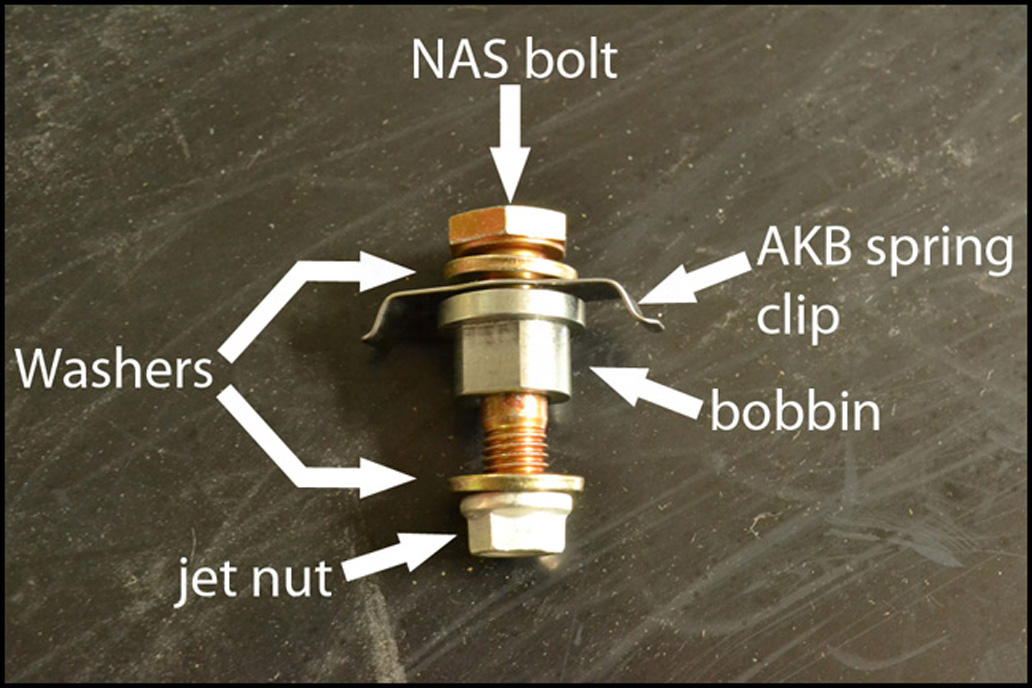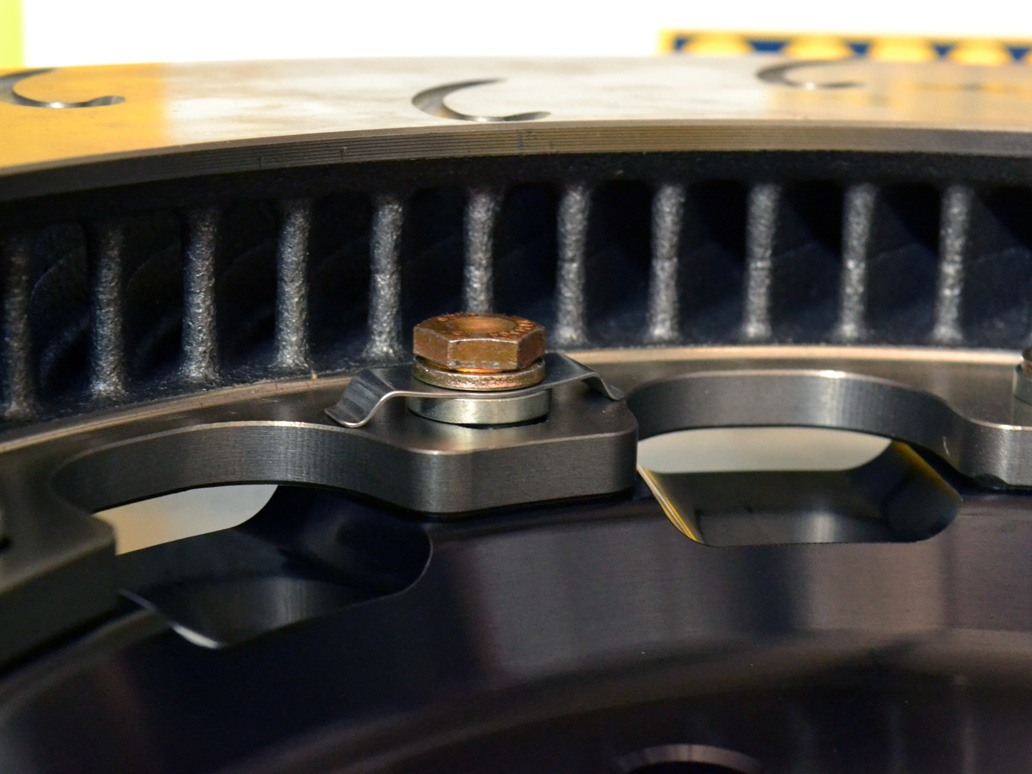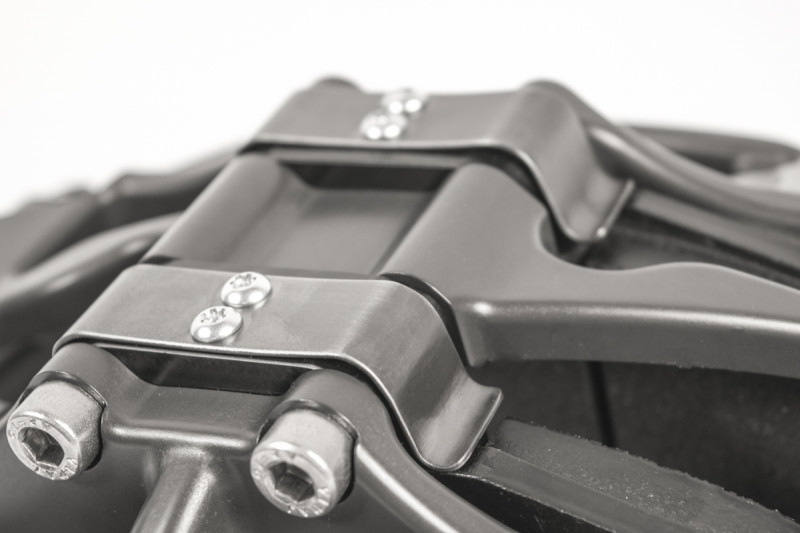Thanks for the kind words and great review Karl. We really appreciate the feedback, and we're glad you're enjoying your brakes so much!
In terms of pad knockback, as noted the AP Racing Pro5000R Radi-CAL has anti-knockback springs installed behind the pistons. From our website:
Anti-knockback Springs
Not only are the pistons stainless steel, they are also fitted with anti-knockback springs. Springs in pistons you ask? Yes, springs. If you’ve ever gone through a series of S turns and then had your pedal drop when going into the following brake zone, you have experienced knockback. To say it is disconcerting is an understatement. You’ll often see pro drivers ‘pre-tap’ their brakes lightly when approaching a brake zone. They are fighting knockback.
Knockback is a phenomenon that is common with fixed calipers. Knockback occurs when your car’s wheel, hub, and bearings deflect during cornering, allowing your brake disc to move out of sync with your caliper and brake pads. The amount of knockback varies by vehicle, and depends on the amount of deflection seen in the parts listed above. As the brake disc deflects, it actually pushes the pads away from each other, forcing the caliper pistons back into their bores. The piston seals don’t have enough tension in them to completely return the pistons to their original location. That means there is slack in the system that needs to be taken up. When you press the brake pedal, it will continue to drop until that slack is taken up.
Anti-knockback springs help alleviate this situation by putting some tension on the back side of the pistons. When the disc deflects and makes contact with the pistons, the springs push the pistons back into their proper location, reducing slack in the system. That means less pedal drop and far fewer pucker-factor moments when going into heavy brake zones.
There are no major downsides to lightweight AKB spring as long as the caliper is designed to accommodate them. More specifically, AKB springs do not create any increased drag or wear on the pads and discs as long as the shape and material of the piston seals takes them into account.
As you're driving the suspension is constantly compressing, the disc is moving around laterally, and the pads are being pushed slightly away from the disc. Think of the seals in the caliper as a spring or hinge attached to the side of the piston, rather than just a ring through which the piston slides. In an AP Racing competition caliper, the groove in which the seal resides isn't a square cut groove.It has angles. When the pistons slide in or out there is friction between the outer piston wall and the seal, and the seal distorts a bit as shown in the illustration below.
A caliper piston sliding out to the left would distort the seal in this manner (the slashes are the seals on either side of the piston):
/
---
---
\
As the piston slides back in to the right, the seal does this:
\
---
---
/
There is a certain amount of tension or friction that needs to be overcome before the piston actually starts moving through the seal ring. That tension/friction keeps the piston from dragging on the disc once the pistons are pushed back into the bores by the disc/suspension movement.
When AKB springs are added, a little more force is required to push the pistons back into their bores than would be required without them. After the spring is compressed, it unloads and pushes the piston back to 'neutral.'
With the proper seal and spring the goal is to keep the piston in the 'neutral' position, not pressed against the disc. The piston is still able to slide freely in either direction, but a bit of friction or tension needs to be overcome initially to get it moving in either direction. The seal offers that first bit of friction to limit movement, and then the spring provides additional resistance. The end result is that the properly designed AP Racing calipers won't drag or create additional or unnecessary wear.
.jpg)
In terms of noise or rattling, the discs are silent. They include small spring clips on every other hardware stack, which eliminates all rattling noises. Again from our site:
Mounting Hardware and Anti-Knockback Spring Clips
If you look closely at the mounting hardware we use in our Competition Kits, you’ll notice a few details that are often overlooked in lesser products. These components are specially made for their intended purpose. These are not cheap bolts found at your local big box store. They are custom made in the USA for Essex and AP Racing, and they are the exact same components we use on professional racing products.
As discussed above with regards to the piston springs, knockback can be a serious issue when tracking a car. In order to help control the lateral motion of the disc, which pushes the pistons back into the caliper, we use an anti-knockback spring clip on every other disc attachment point (on a ten bolt disc there are five spring clips, while on a twelve bolt disc there are six). These spring clips help keep the disc hat and iron ring in alignment, while still allowing the disc to expand and float radially. As an added bonus, they prevent the hat and iron disc from rattling and making noise.


With the standard bridge installed the CP9660 and 9668 calipers do allow some pad movement and rattle. We have a solution for that as well, which is our optional pad tension kit. These place a little downward pressure on the top of the pad and eliminate any pad rattling noise.
In summary, with the pad tension kit installed and a mild pad compound (to combat squealing), our AP Racing Competition Kits don't make any unpleasant noises, rattles, etc. You essentially wouldn't notice any difference in 'livability' vs. stock.
https://www.essexparts.com/essex-des...p9660-calipers
